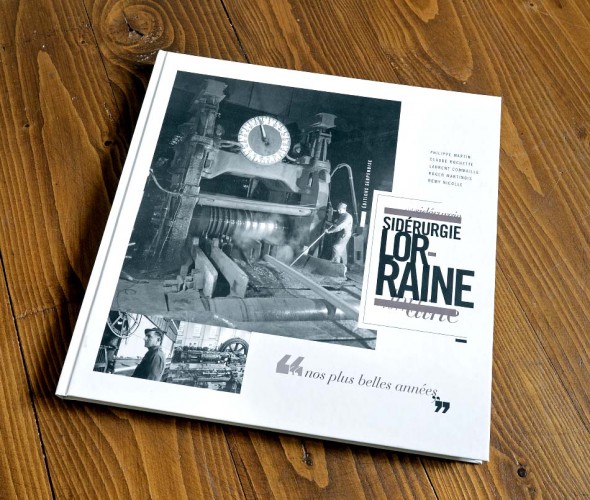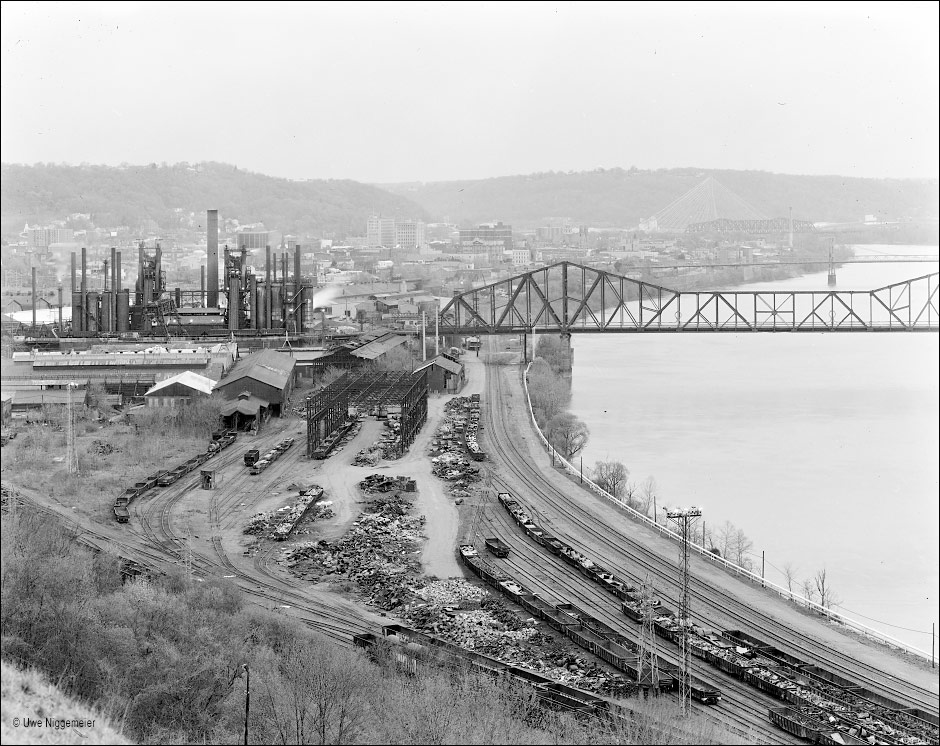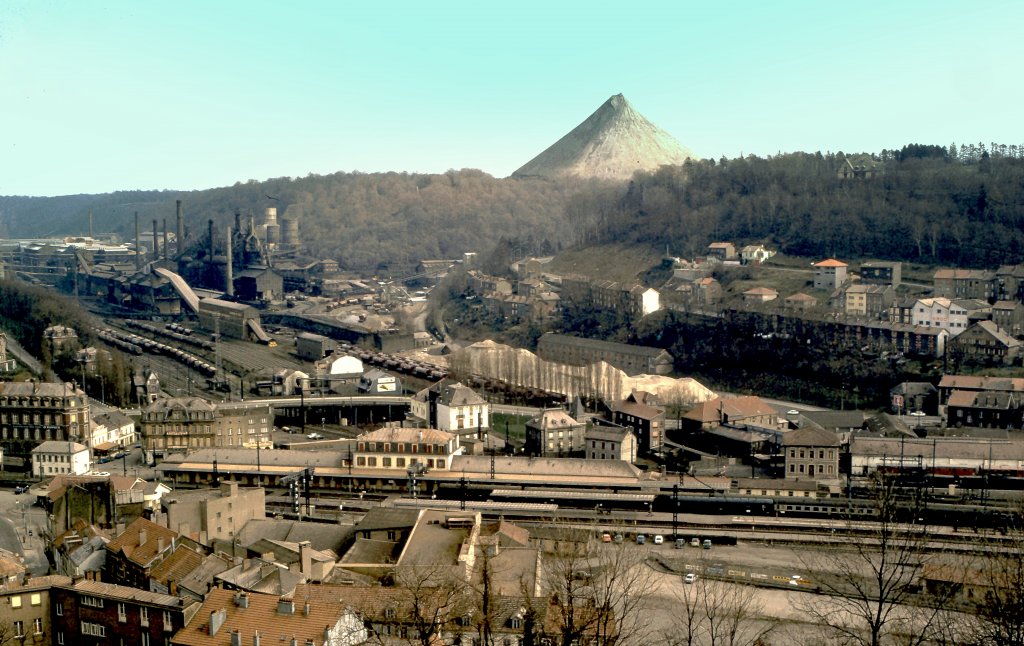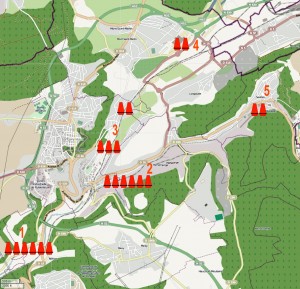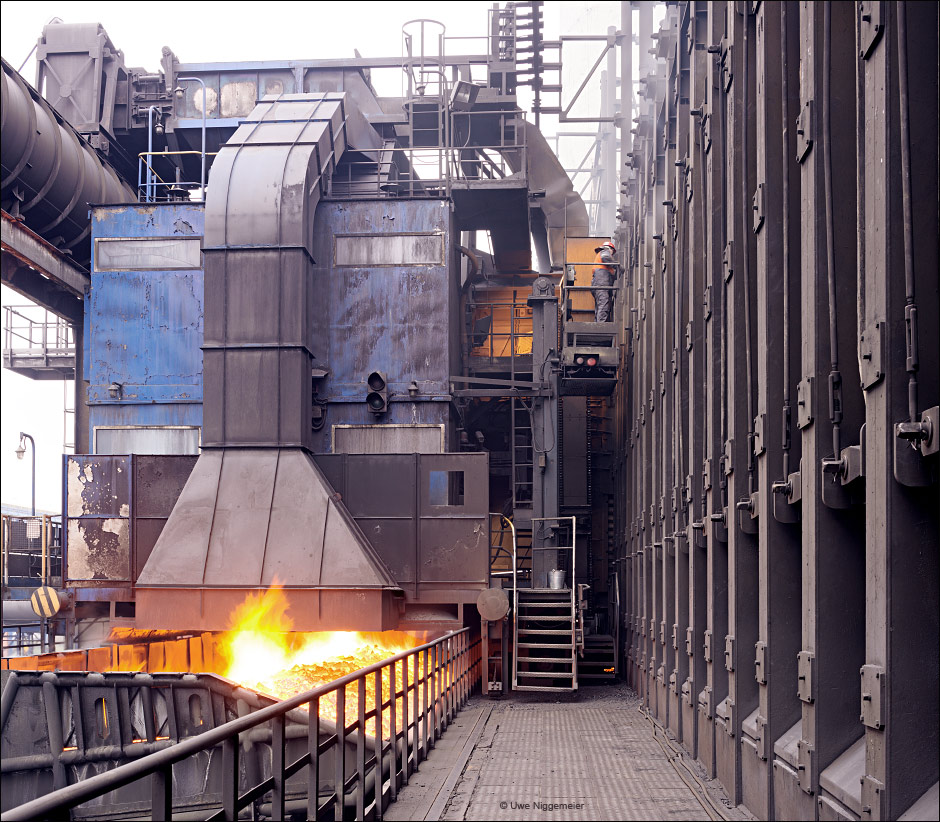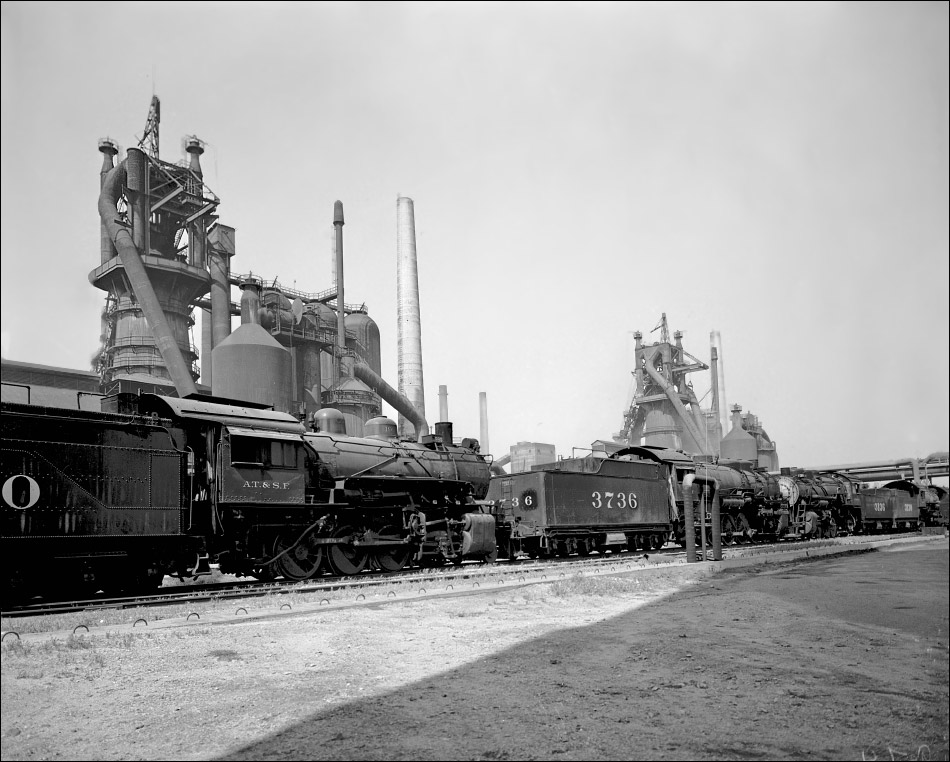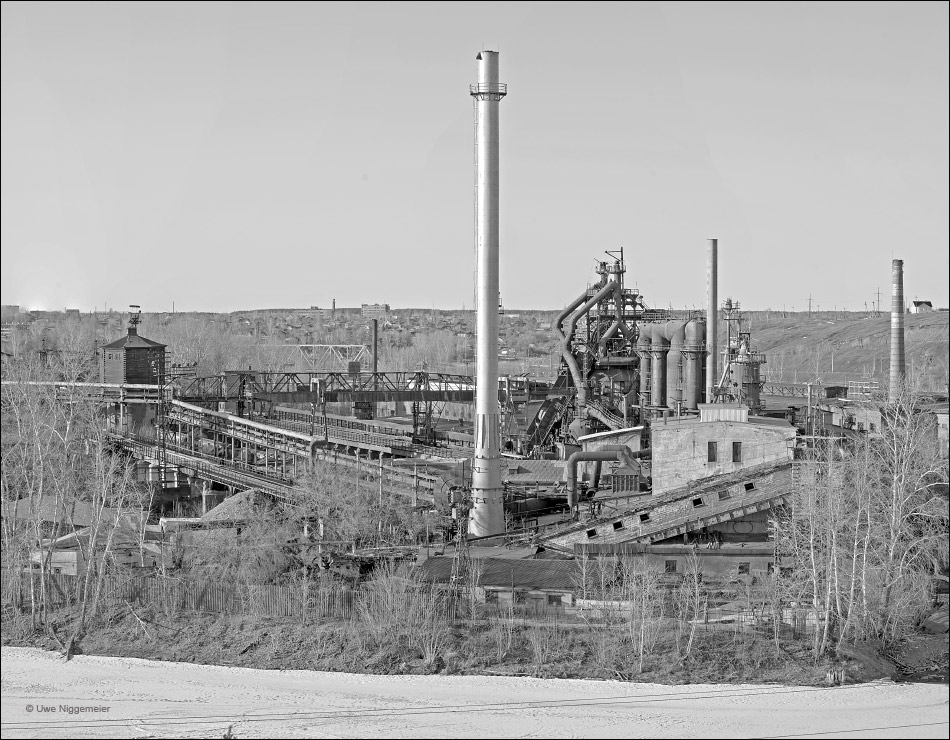A new book from Editions Serpenoise, who already published quite a lot about Lorraine steel making, shows rare and impressive images, in an overall good quality, from the Terre Rouge country.
After the book is 80%-photos it doesn’t matter much if you can’t read French.
The book has 150 pages and shows about 300 B/W images.
There are a few flaws like undated images, no real structure and some wrong captions, but overall it is worth buying.
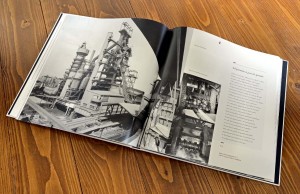
Steubenville
Longwy
In the 1960ies the small town of Longwy, France (pop. 60000) still housed more than 20 blast furnaces. A unique density.
The mills were running on local iron ores of a rather poor quality that became uneconomical in the 1970ies with high quality iron ore shipped into Europe from overseas.
35 years ago, after the announcment of La Chiers’ closure, Longwy’s steel workers started their long and exceptional violent struggle to keep their jobs.
Since the closure of Arcelor’s wire rolling mill in 1998 there is no more steel industry in town.
Jean-Marie Ottelé site: www.industrie.lu is a unique source of information about the Terre Rouge (Red Earth) steel industry.
1: Cockerill-Ougrée-Providence
Founded: 1865.
Closed: 1987
2: Lorraine-Escaut
Founded 1835
Closed 1987
3: Hauts Fourneaux De La Chiers
Founded: 1881
Closed: 1979
4: Aciéries de Longwy
Founded: 1880
Closed: 1978
5: Hauts-Fourneaux Réunis de Saulnes et Uckange
Founded: 1872
Closed: 1991
The Last Open Hearth In The U.S.

© Chris Dunker (Dunker Imaging)
was closed down in December 1991 at Geneva Steel in Utah. The end of an era for a nation that, in 1970, still produced nearly 40% of it’s raw steel out of open hearth furnaces.
The Geneva OH-shop contained ten 340 ton furnaces first tapped in 1944 and upgraded in between 1957 and 1964.
They were replaced by two 225 ton Q-BOF vessels originally installed at Republic Steel’s (later LTV Steel) South Chicago works in 1991.
For an unknown reason the Geneva Steel company, the successor of U.S. Steel, left the open hearth shop standing until they finally went bancrupt in 2002 and the mill was dismantled in 2004.
Large portions of the mill (caster, plate and strip rolling mill) were sold to Chinese steel maker Qindago Steel.
In 2004 Chris Dunker was allowed to document the demolition of the mill with his camera.
Part of the work can be seen in his book: “Dismantling Geneva Steel”.
Batteries
Lots of change over the last ten years at Europe’s largest coking plant in
in Zdzieszowice, Poland.
The works were built in 1930 by the German mining company Gräflich Schaffgottsche Werke.
The design of the first coke oven batteries no.1&2 was carried out by the famous German industrial architects Fritz Schupp and Martin Kremmer.Both batteries were installed by the Still company.
In between 1962 and 1968 batteries 3-6 were commissioned by a Russian manufacturer. All of the six batteries now existing were stamp charged.
In 1972 a second strand of top charged batteries (7-10) was installed one kilometer south of the existing one.These ovens were built by a Polish company.
From 2002 to 2004 batteries 7&8 were completly rebuilt and batteries 9&10 were abandoned.
In between 2006 to 2008 two new batteries(11&12) were built west of battery no. 7 by the Zarmen company from Poland.
Immediatly after the old batteries no. 1&2 were closed down and dismantled in 2010. Batteries 9&10 were torn down in 2011.
Some new images at Stahlseite.
California Furnaces
The least thing one would expect more than 2000 miles west of the rustbelt and just 50 miles out of Hollywood is a fully integrated steel mill.
But it was there, built in 1942 by Henry J. Kaiser on a former hog farm and ,mostly ,dismantled in the late 1980ies.
In the early 1940ies Kaiser Industries were in search for a steel plate supply for their nearby Richmond shipyards where more than 700 vessels, mostly “Liberty Ships” were built during WWII.
In 1942 ground was broken in Fontana and by 1943 a coking plant, one blast furnace (“Big Bess”) with a capacity of 1200 tons/d and an open hearth shop were under fire.
A 148″ plate mill was added in 1943 and the 86″ hot strip mill started in 1950.

In it’s heyday the mill ran four blast furnaces(hearth diameter 8,7 -8,9 meter) and installed the second BOF steel making shop in the U.S. as early as 1955.
In the 1960ies the location 50 miles away from the coast (imposed by the U.S. Army) at the so called “Inland Empire” became an increasing problem with all raw materials having to be hauled in by rail.
In a last attempt to make the plant competitive a new BOF shop and a continuous caster were built in 1978 to be closed down for good already in October 1983.
Kaiser Steel filed bancruptcy and the plate and hot strip rolling mills were taken over by California Steel Industries in 1984, supplied with slabs from overseas.
The plate mill was sold to the Oregon Steel Company in 1989 and abandoned in 1994.The 86″ hot strip mill is still active.
The remaining iron and steel making facilities were occasionally used by nearby Hollywood studios as a film set (Terminator2) and later dismantled.
The BOF shop was bought by the Capital Iron & Steel Co and shipped to China in 1993.
The ground is now overbuild by a car race track.
Nice historical feature.
Piombino To Close Liquid Phase
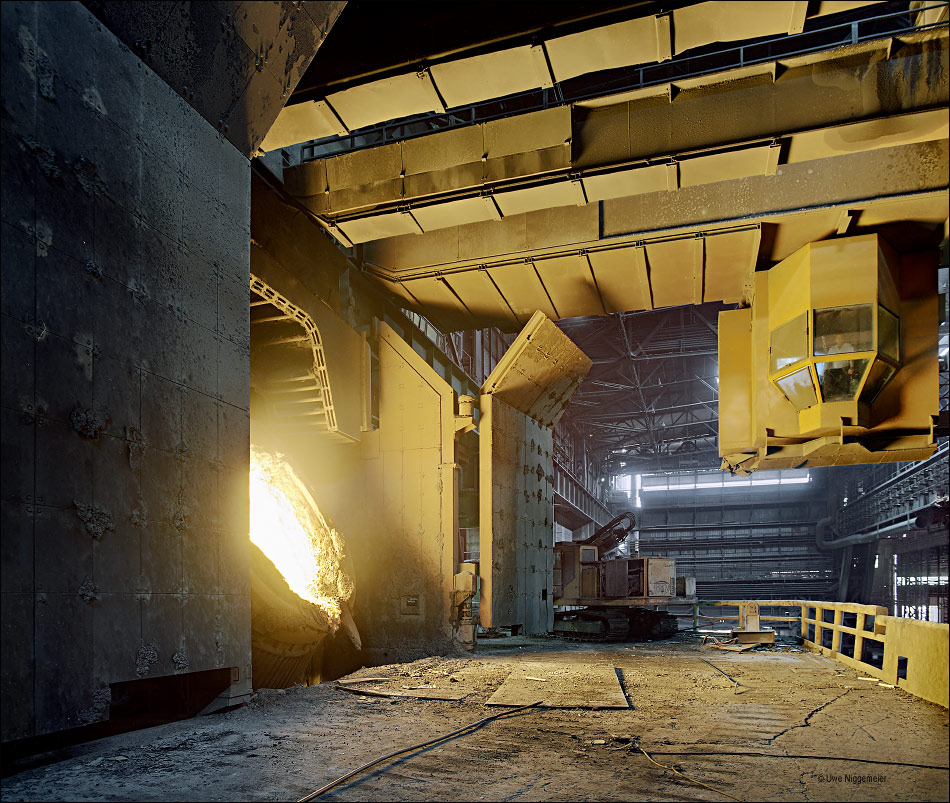
After unsuccessfully trying to sell the former Lucchini steel mill in Piombino, Italy for six month government commissioner Piero Nardi plans to shut down the blast furnace and the steel production for good in September.
The blast furnace with a capacity of 6600 tons/d was built in 1978 (hearth diameter is 10,6 meters) and would have to be relined by now.
The BOF shop contains three 120 ton LBE-CBS(Lance Bubbling Equilibrium – Control Bottom Stirring) type converters.
The remaining rolling mills (rail, bar and wire mill) might be sold individually or to an investor who is willing to invest into a new electric arc melt shop on the Piombino site.
The Piombino mill produces a loss of 10-15 Mio EUR each month.
Further images.
Société Carolorégienne de Laminage
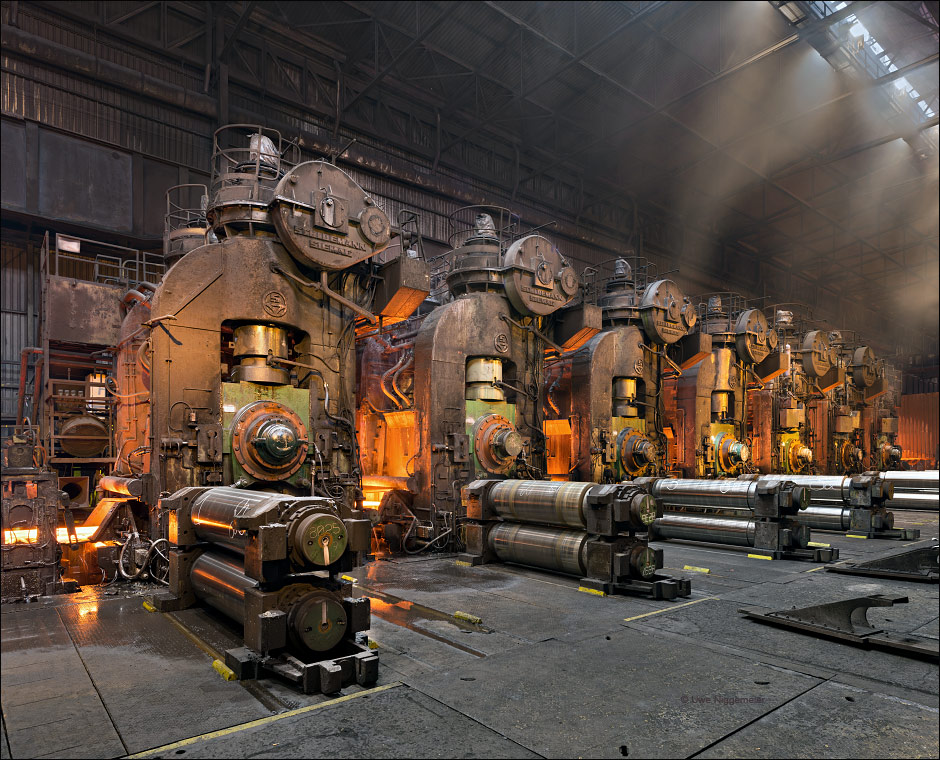
CARLAM (Société Carolorégienne de Laminage), the wide hot strip rolling mill in Chatelet, Belgium was built in 1976 on the banks of the Sambre river by the Hainaut-Sambre steel company.
It became the third wide hot strip mill in Belgium (besides Espérance-Longdoz’ Chertal site and Sidmar in Ghent).
The mill was supplied with slabs from Hainaut’s BOF shop (built in 1971) in nearby Montignies.
In 1980 Hainaut-Sambre merged with the Thy-Marcinelle steel company located in another suburb of Charleroi to become the largest steel producer in the Sambre valley.
Only one year later Hainaut-Sambre joined the Cockerill company from Liege, Belgium to form Cockerill-Sambre.
In 1982 a second walking beam furnace and a sixth finishing stand was installed at Carlam.
The blast furnaces and the BOF steel making in Montignies were closed in 1985. Slabs were provided by Cockerill Sambe’s OBM steel plant in Marcinelle (built in 1976) from now on.
A seventh finishing stand was commissioned at Carlam in 1989.
Cockerill-Sambre became part of Arcelor in 2002.
After the integrated steel production at Marcinelle was sold to the DUFERCO steel group in 2004 (now called CARSID) a new stainless steel melt shop was built in 2004 in Chatelet next to the Carlam rolling mill.
Carlam was renamed Carinox and became part of Arcelor’s stainless steel branch Ugine & ALZ.
The stainless branch of ArcelorMittal (who merged in 2007) was spinned off under the new name Aperam in 2010.
The newly installed 160 tons electric arc furnace is one of the largest in Europe. It supplies raw steel to a 180 ton AOD converter for the transformation to stainless steel.
The steel is then casted into slabs weighing 30 tons each.
The wide hot strip mill processes slabs both from Chatelet and the second Aperam melt shop in Genk, Belgium.
More images at Stahlseite.
Vintage image #8

The Carnegie Steel Ohio works on the banks of the Mahoning River around 1910.
This mill became part of U.S. Steel later and was closed in 1979.
Starting with the “Black Monday” in September 1977, the closure of Youngstown Sheet And Tube, the once thriving valley of steel was gutted within just one decade.
A recommendable book telling the story of this decline is John Russo’s “Steeltown U.S.A. – Work And Memory In Youngstown” published by the University Press Of Kansas.
Nizhny Tagil Region
The Ural region is a cradle of the Russian iron and steel industry.
Based on it’s rich iron ore deposits a vast number of charcoal fired blast furnace sites emerged in the 18th century. Most of these are gone today, replaced by the huge combines of the communist era. A few have survived, mostly rusting away in the harsh climate of the eastern Ural:
The Verhnesinyachihinsky Metallurgical Plant in Werchnjaja Sinjatschicha was founded 1769 and went bancrupt in 2012.
The Alapaevsk Iron Works origin from 1704 and seem to be idled by now.
The Kuibyshev Metallurgical Plant in Nizhny Tagil goes back to the Demidov iron company from 1725 and was closed in 1987. It hosts a museum but seems to be in a rather poor condition and seldom opened to the public.
Images at Stahlseite.de .

